I previously wrote about how many investors are proceeding with caution because assets are starting to command higher and higher purchase prices and that the market may be overpriced. I took this statement as factual because of the many accomplished industry veterans who alluded to this point. However, I wanted some stats to back up this claim.
First, I looked at trading volume in DC. According to a recent Real Capital Analytics report, volume of properties being traded in the Washington, DC Area is up over 5% year over year. This is a sign that investors see value in the market. Additionally, year over year prices for real estate assets are down 5%. The DC Metro area is one of only four global cities that has not seen overall prices increase since 2006 (along with Amsterdam, Tokyo and Chicago) and those other cities all had year over year price increases.
The building we have our offices in, 15245 Shady Grove Road, traded for $24.8 Million in May 2017. That is down from the $32 Million it traded for in August 2011 and the $33 Million it traded for in January 2002. Occupancy levels decreased significantly but so did the cap rate.
Prices are too high now because investors are more conservative.
If prices are too high – then they were WAY too high a few years ago.
What does this mean?
Investing in suburban real estate is not a clear vehicle for growth that it was once considered. Some properties are durable. Buildings in walkable, transit-oriented communities continue to see their valuations increase at the expense of their more remote competitors.
If you are investing in a property you better have a plan. Do you plan to convert it to self-storage (4 Research Place)? Do you plan to capitalize on unused FAR and favorable zoning and build residential on the property (700 Quince Orchard)?
The investors who will have success in this market are the ones with a specific plan that is unique or sees the property in a way that others do not.
What is it?
1031 Exchanges
1031 Exchanges are a way for an individual to continually reinvest profits from one real estate venture into another without paying taxes on that gain.
Example: Say I purchased a property for 100 dollars and 5 years later it is worth $150. If I were a rich man I would have to pay the 20% capital gains tax on $50 gain. However, section 1031 of the IRS tax code allows that gain to be reinvested without being taxed. Now I have $150 that I can use as the 20% down payment on a $750 property. If that property appreciates, I can roll the profits forward again, continually buying more or bigger properties.
This is not a way to avoid taxes altogether because eventually, the IRS will get their money if you decide to cash out and sell all properties without buying a new one. However, if you can make a living off the cash flows the property provides, this is a good vehicle to grow and buy bigger and more properties.
Posted by Matt Brown, Acquisitions Analyst
